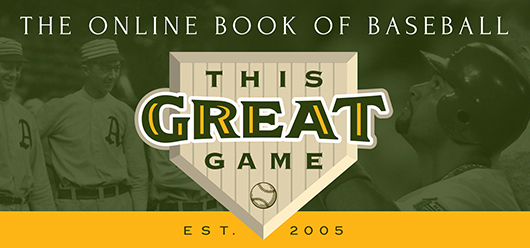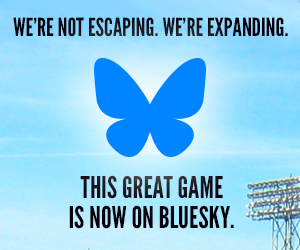THE TEAMS
The Braves’ 10 Greatest Pitchers
 Warren Spahn (1942, 1946-64)
Warren Spahn (1942, 1946-64)
The gangly southpaw racked up win after win to the point that people began to wonder when he would stop. Spahn finally hit the brick wall of decline in 1964, a year after setting a career high with 23 victories; it was the 13th time he had reached 20 wins, a tally never surpassed and only matched by Christy Mathewson.
Some believe that Spahn—who won a post-deadball era record 363 games, all but six of which were notched with the Braves—could have topped 400 had it not been for three-plus years lost to World War II service. But Spahn believed that his time in the military, which included actual combat that earned him both a Purple Heart and Bronze Star, gave him a newfound perspective on the relative frivolity of baseball, and that outlook—combined with a deceptive, under-exerting pitching delivery—fueled his longevity in the majors.
In 1947, Spahn’s first full season with the Braves, he set the tone for what was to follow; he won 21 games and posted a 2.33 earned run average for his first of three NL ERA titles. He racked up wins as if contractually obligated to do so; he led the NL eight times, including five consecutive seasons from 1957 to 1961, when he turned 40. To prove his perseverance, the 42-year-old Spahn dueled for 16 innings with San Francisco ace Juan Marichal on July 2, 1963 and threw a remarkable 201 pitches, finally bowing 1-0 on a Willie Mays home run—and returned on four days’ rest to forge a five-shutout in the heat and humidity of Houston.
At the plate, Spahn was no automatic out. His 35 career home runs remain an NL record for a pitcher.
 Greg Maddux (1993-2003)
Greg Maddux (1993-2003)
Many believed the Braves were performing overkill when they brought Maddux in from Chicago to join a rotation already regarded as the best in the game; making matters worse for opposing hitters, Maddux had yet to reach his peak. He quickly did that for the Braves, handling the giants of the steroid era with ease while the majority of other major league hurlers struggled just to keep their ERAs down to double that of Maddux’s. The maturity that led to his dominance was tied to his pinpoint mastery of the strike zone that reduced his walk totals in half; as if his pitching wasn’t good enough, Maddux was also the majors’ best defensive pitcher, scooping up anything hit near him with lighting-like reflexes to earn him a Gold Glove for all but one of his 11 seasons in Atlanta.
Maddux won all four of his ERA titles for the Braves; his 1.56 and 1.63 ERAs in, respectively, 1994 and 1995, represented two of the five lowest numbers since the end of the deadball era. He only won 20 games once for the Braves (in 1993, his first year in Atlanta) but was robbed of 20-win campaigns in both 1994 and 1995 by the devastating players’ strike and finished with 19 in three other full seasons.
Unfortunately for Maddux, his regular season dominance did not translate to the postseason, resulting in a microcosm of the Braves’ October struggles in general during Bobby Cox’ reign as manager. Despite a career postseason 2.82 ERA for the Braves, he could only amass an 11-13 record.
 Tom Glavine (1987-2002, 2008)
Tom Glavine (1987-2002, 2008)
Maddux’s arrival in 1993 seemed to relegate the established southpaw to a supporting role in many people’s minds, but Glavine had unquestioned ace stuff for the majority of his career; he’s one of just six southpaws with over 300 career wins. In fact, Glavine outpaced Maddux in 1993 with 22 wins, making him the last pitcher to date to earn three straight seasons of at least 20.
Glavine was drafted by both the Braves and the NHL’s Los Angeles Kings—and after going 7-17 in his first full season for a sadsack (54-106) Atlanta team in 1988, he must have wondered if he had made the right career choice. But his fortunes mirrored those of the Braves in 1991 by turning quickly for the better, winning 20 games with a 2.55 ERA to lead the Braves to their first World Series appearance in 33 years. Glavine largely maintained a high level of success for the bulk of his career with the Braves, painting the outside corner of the plate as well as any pitcher in the history of the game.
In the decisive Game Six of the 1995 World Series, Glavine pitched eight innings of one-hit ball against a potent Cleveland offense to give Atlanta its only championship during its unprecedented regular season run of 14 straight divisional titles. It was a sweet finish to a year that had started on a rough note when Glavine, a prominent union representative during the 1994-95 players’ strike, was booed by his own home fans for his involvement in the disastrous work stoppage.
 Lew Burdette (1951-63)
Lew Burdette (1951-63)
Burdette was to Spahn as Glavine was to Maddux: A terrific pitcher happily hidden in the shadows of the superstar teammate. It was just as well that Burdette didn’t attract attention, as he continuously dodged suspicions that he was using the spitball.
Raised by the New York Yankees but unable to stick in the Bronx because of the team’s crowd of talent, Burdette would make them pay in 1957 by winning three games—all complete games, two by shutout—to give the Braves their only world title in Milwaukee over the Yankees in seven games.
Burdette was a reliable workhorse to complement Spahn, averaging 17 wins per year between 1953-61; he led the NL in wins with 21 in 1959, won an ERA title in 1956 (2.70) and threw a no-hitter against Philadelphia in 1960. Wasting pitches was not on Burdette’s mind, as he averaged less than two walks per nine innings throughout his career.
 John Smoltz (1988-2008)
John Smoltz (1988-2008)
The Michigan native who dreamed of being a Detroit Tiger—and was close to achieving that wish when he was traded from the Tigers’ organization to Atlanta for Doyle Alexander in 1987—became part of, arguably, baseball’s best-ever trio of starters, matching up with Maddux and Glavine for a good decade. Smoltz’s results weren’t as sterling as the other two, but he was never to be underestimated by opponents. He enjoyed a career year in 1996 when he won the NL Cy Young Award based on a 24-8 record, buoyed by 14 straight victories after suffering a loss in his first start of the season.
After missing the 2000 season to undergo Tommy John surgery, Smoltz made an amazing transition to the closer role with the Braves and set a NL record with 55 saves in 2002; the following year he saved 45 more games with a terrific 1.12 ERA. The dual achievements as both starter and closer made Smoltz one of two pitchers (Dennis Eckersley being the other) to collect over 200 wins and 150 saves over his career. The Braves’ chronic playoff disappointments of the 1990s-2000s could not be attributed to Smoltz, who fashioned a career 15-4 postseason record with a 2.67 ERA.
Smoltz’s sure and smooth gift at pitching analysis has made him the top choice in the broadcast booth for national TV coverage.
Phil Niekro (1964-83, 1987)
The most prolific knuckleballer in the history of baseball made for an early splash without throwing a single knuckler; making the transition from reliever to starter midway through 1967, Niekro impressed with a combination of sliders and fastballs and finished with his only ERA title, at 1.87. After losing 18 games with a 4.27 ERA in 1970, Niekro tried out the knuckleball—and it gave him renewed baseball life on the mound through the age of 48.
The knuckler allowed Niekro to become an absolute workhorse through the late 1970s; he racked up over 300 innings of work in three consecutive years with varying results and, in 1979, became the last pitcher to date (and likely the last ever) to both win and lose 20 games. Feeling as if he’d been eternally tied to a losing franchise, Niekro came alive in 1982 by producing a 17-4 record for an Atlanta team that made its first postseason appearance in 13 years. His 121 wins after turning 40 is a major league record.
 Bob Buhl (1953-62)
Bob Buhl (1953-62)
A rookie in the Braves’ wondrous first year at Milwaukee, Buhl became a solid component in a Braves rotation already solidified with Spahn and Burdette for the next 10 years. He won 18 games in consecutive seasons (1956-57), led the majors with four shutouts in 1960 and always seemed to have the Dodgers’ number. In 1956, Buhl won eight games against Brooklyn and won five more against the transplanted Los Angeles Dodgers in 1959; when Los Angeles barely eked out a 6-5, extra-inning Game Two win over the Braves to clinch a best-of-three tiebreaking playoff that year, they breathed a major sigh of relief—for Buhl would have pitched Game Three had they lost.
 Dick Rudolph (1913-23, 1927)
Dick Rudolph (1913-23, 1927)
A star for Toronto in the International League but an overlooked failure in a brief tenure with the New York Giants, Rudolph made good on his second major league audition with the Braves and, in his second season with Boston, became a vital cog in the 1914 Miracle Braves’ historic run to the championship, winning a career-high 26 games against just 10 losses; he allowed just one run over two complete game victories in the team’s World Series sweep over the Philadelphia A’s. Rudolph became the team workhorse for the rest of the 1910s, keeping opposing hitters guessing with a wide assortment of pitches including the spitball; he was grandfathered into continuing to use the spitter legally in the 1920s, but by then his career flamed out and pitched little, focusing more on his role as a coach for the Braves.
 Danny MacFayden (1935-39, 1943)
Danny MacFayden (1935-39, 1943)
Placed on waivers with a career 4.33 ERA after underwhelming tours of duty with the Boston Red Sox, New York Yankees and Cincinnati Reds, MacFayden was picked up by the Braves in the midst of their miserable (38-115) 1935 season and quickly sprang to life, delivering the best results of his career with the rechristened Bees in the late 1930s—finishing second, seventh and third in the NL ERA race from 1936-38. After a subpar 1939 campaign, the bespectacled MacFayden was traded to Pittsburgh, but returned to Boston in 1943 as an aging wartime replacement player coming out of retirement and was utterly unspectacular.
 Johnny Sain (1942, 1946-51)
Johnny Sain (1942, 1946-51)
In the 1940s, the right-handed Sain was considered the more dominant of the famed two-man Boston Braves pitching duo that included Spahn; their pairing led to the famous refrain, “Spahn and Sain and pray for rain.” (That likely didn’t go over well with Vern Bickford and Bill Voiselle, who rounded out the rotation.)
Sain, who like Spahn debuted for the Braves in 1942, had their careers interrupted by war for three seasons and then returned in 1946 with a bang, winning 20 or more games from 1946-48 and topping the run with a league-leading 24 in 1948 to help lead Boston to the World Series. But just as Spahn’s career began to take off in the 1950s, Sain’s withered away; he was dealt to the Yankees in 1951, where he bounced between the rotation and bullpen with mixed results before dropping out of action in 1955. Yet Sain wasn’t done in baseball; he became a highly successful (if nomadic) pitching coach, bringing the best out of various pitchers such as Whitey Ford, Jim Kaat, Denny McLain and Wilbur Wood.
Atlanta Braves Team History A decade-by-decade history of the Braves, the ballparks they’ve played in, and the four people who are on the franchise’s Mount Rushmore.
The Braves’ 10 Greatest Hitters A list of the 10 greatest hitters based on their productivity and efficiency.
The Braves’ 10 Most Memorable Games A list of 10 memorable games and other notable personal achievements that have defined the Braves’ history.





